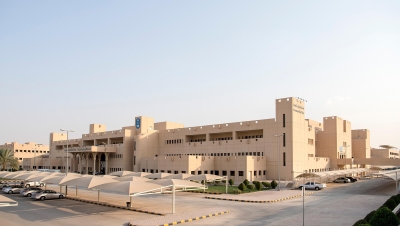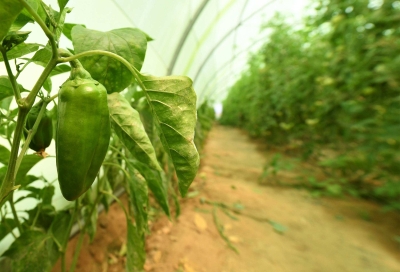
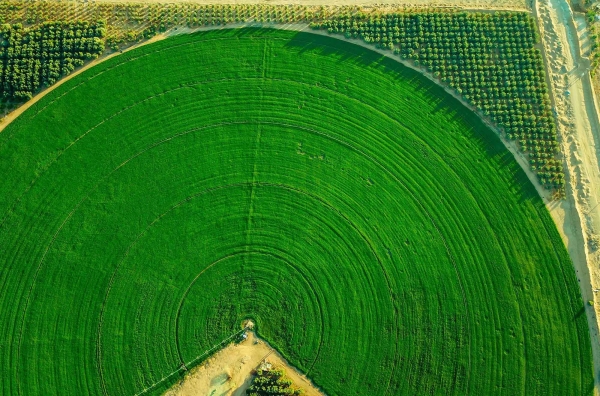
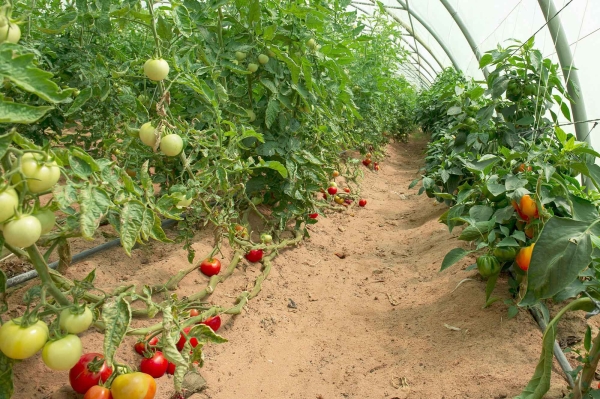
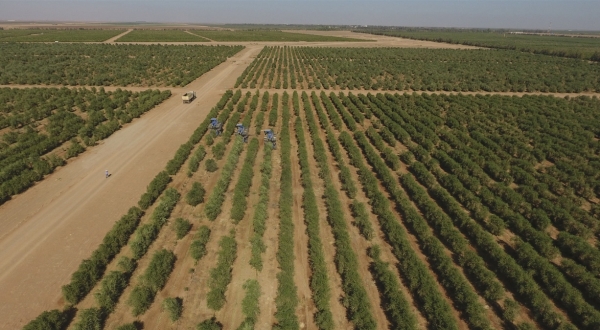
Irrigation of Agricultural Crops in the Kingdom of Saudi Arabia refers to the systems used to deliver water and irrigate crops, trees, and green spaces in the Kingdom. These systems contribute to saving water, energy, and labor.
Modern irrigation systems are divided into two groups: sprinkler irrigation systems and drip irrigation systems. These systems deliver irrigation water from its source through a network of pipes, either above or below the soil surface, to reach the plants via sprinklers or drippers.
Sprinkler irrigation systems
Sprinkler irrigation systems include three methods, the first of which is the moving sprinkler system. It consists of a single pipe made of galvanized steel, lined steel, or plastic, which moves mechanically on wheels in straight lines or in a circular pattern. Water flows through the pipe to the sprinklers to irrigate the planted area. The pivot irrigation system, which extends in the form of arms rotating around a pivot to irrigate large areas, is one of the most commonly used systems.
The second system is the stationary sprinkler irrigation system. It consists of a set of sprinklers mounted on stands, which are connected to a lateral pipe that is usually buried below the soil surface. This system is used for irrigating field crops, forage crops, and green spaces, and it is the second most widely used system.
The third system is portable sprinkler irrigation, which consists of fixed parts such as main lines and sometimes lateral lines, and movable parts such as sprinkler lines that are moved after the irrigation process is completed to water another section of the planted area. This irrigation system is not commonly used.
One of the advantages of the sprinkler irrigation system is that it can be used on land with difficult topography without the need for leveling. The sprinkler nozzle is less prone to clogging due to its large size. This system helps to moderate the field temperature, providing a suitable climate for crop growth, and it is designed to minimize the need for labor.
Drip irrigation systems
Drip irrigation systems are varied and deliver irrigation water to plants in measured amounts, with a slow discharge in the form of separate or continuous drops through small parts called drippers. Among these are surface drip systems, where the dripper lines are placed on the soil surface, used for irrigating both closely spaced and widely spaced plants.
Another type is the subsurface drip irrigation system, where the dripper lines are buried about thirty cm below the soil surface. There is also the bubbler or fountain irrigation system, which delivers water to the soil surface in the form of a flowing water stream. The micro-spray irrigation system delivers irrigation water above the soil surface in the form of a mist or small circle. The oscillating irrigation system provides intermittent water delivery from high-discharge drippers.
All these systems are commonly used in the Kingdom for irrigating vegetable crops, palm, and fruit trees, ornamental trees and shrubs, as well as green spaces. However, subsurface irrigation is still limited in use. Another system is the valve irrigation system, a variant of the bubbler system. It consists of a sixteen mm valve ending in a circular ring surrounding the tree trunk, with no open outlets to help water flow uniformly in the irrigation basin. The purpose of the valve is to control and balance the amount of water distributed among the trees along a single line.
One of the advantages of drip irrigation is that it maintains the water content in the root zone at optimal levels, allowing plants to efficiently absorb water and nutrients. It also reduces the growth of weeds since only a portion of the soil surface is irrigated. Drip irrigation saves up to approximately 40 percent of irrigation water and also conserves energy, as it operates at a low operating pressure. It allows the use of high-salinity water without significantly reducing production by keeping the soil moisture content high, thereby ensuring that the salt concentration in the soil water remains below the harmful threshold for plants.
Related quizzes
